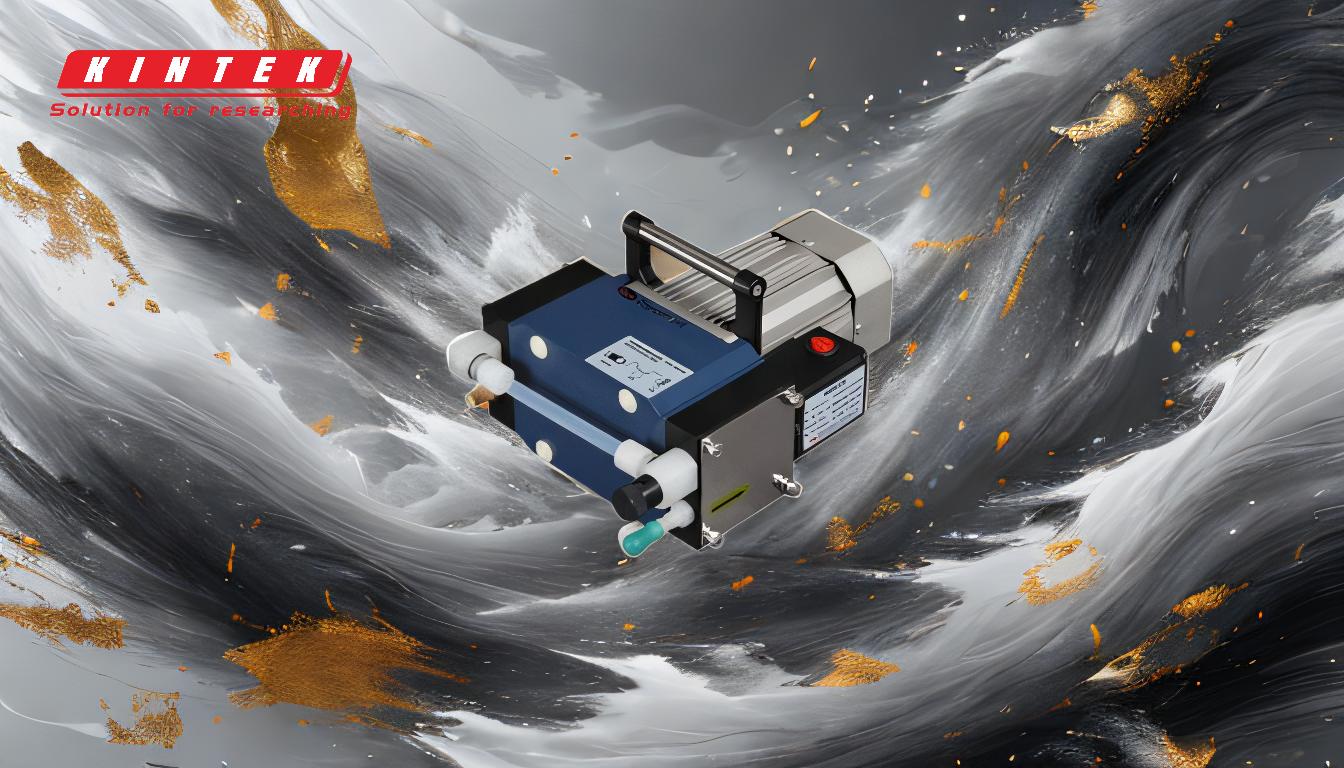The most efficient type of vacuum pump depends on the specific application and requirements, as efficiency is determined by factors such as vacuum level, flow rate, chemical compatibility, maintenance needs, and cost. For general-purpose applications, oil-sealed rotary vane pumps are often efficient due to their ability to achieve deep vacuum levels (10^-3 Torr) and handle a wide range of gases. However, for applications requiring oil-free operation or resistance to harsh chemicals, diaphragm pumps or dry scroll pumps may be more efficient. Ultimately, the efficiency of a vacuum pump is application-specific, and the best choice balances performance, durability, and operational costs.
Key Points Explained:

-
Application-Specific Efficiency:
- The efficiency of a vacuum pump is highly dependent on its intended use. For example:
- Oil-Sealed Rotary Vane Pumps: Efficient for applications requiring deep vacuum levels (e.g., freeze dryers, molecular distillation) due to their ability to reach 10^-3 Torr.
- Diaphragm Pumps: Ideal for oil-free and chemical-resistant applications, such as in laboratories handling corrosive gases.
- Dry Scroll Pumps: Suitable for cleanroom environments or applications where oil contamination is a concern.
- The efficiency of a vacuum pump is highly dependent on its intended use. For example:
-
Vacuum Level and Flow Rate:
- The relationship between maximum vacuum and maximum flow rate determines pump performance. For instance:
- High vacuum levels are necessary for applications like freeze drying, while high flow rates are critical for processes like filtration or aspiration.
- Balancing these factors ensures minimal sample loss and optimal evaporation rates.
- The relationship between maximum vacuum and maximum flow rate determines pump performance. For instance:
-
Chemical Compatibility:
- The type of chemicals and their concentrations used in the application dictate the pump's material and design. For example:
- Pumps with chemical-resistant materials (e.g., PTFE diaphragms) are essential for handling corrosive gases or solvents.
- Oil-sealed pumps may not be suitable for applications involving reactive gases that could degrade the oil.
- The type of chemicals and their concentrations used in the application dictate the pump's material and design. For example:
-
Maintenance and Operational Costs:
- Efficiency also depends on the pump's maintenance requirements and longevity. Key considerations include:
- Oil-sealed pumps require regular oil changes and maintenance, which can increase operational costs.
- Oil-free pumps, such as diaphragm or dry scroll pumps, have lower maintenance needs but may have higher upfront costs.
- Efficiency also depends on the pump's maintenance requirements and longevity. Key considerations include:
-
Environmental and Operational Factors:
- Factors like noise level, vibration, heat emission, and energy consumption impact the overall efficiency of the pump. For example:
- Pumps with low noise and vibration levels are preferable for laboratory environments.
- Energy-efficient models reduce operational costs over time.
- Factors like noise level, vibration, heat emission, and energy consumption impact the overall efficiency of the pump. For example:
-
Cost Considerations:
- The initial investment cost versus long-term operational costs must be evaluated. For instance:
- Oil-sealed pumps are generally more affordable upfront but may incur higher maintenance costs.
- Oil-free pumps have higher initial costs but lower long-term expenses due to reduced maintenance.
- The initial investment cost versus long-term operational costs must be evaluated. For instance:
-
Specific Application Examples:
- Different applications require different types of pumps for optimal efficiency:
- Filtration and Aspiration: Diaphragm pumps or small rotary vane pumps are efficient for low vacuum levels (a few hundred Torr).
- Freeze Drying and Molecular Distillation: Oil-sealed rotary vane pumps or dry scroll pumps are better suited for deeper vacuum levels (10^-3 Torr).
- Cleanroom Environments: Dry scroll pumps are preferred due to their oil-free operation and low contamination risk.
- Different applications require different types of pumps for optimal efficiency:
In conclusion, the most efficient vacuum pump varies based on the specific application, required vacuum level, flow rate, chemical compatibility, and operational constraints. Evaluating these factors ensures the selection of a pump that maximizes performance while minimizing costs and maintenance.
Summary Table:
| Factor | Key Considerations |
|---|---|
| Application | Oil-sealed rotary vane, diaphragm, or dry scroll pumps based on specific use cases. |
| Vacuum Level & Flow Rate | High vacuum for freeze drying; high flow rate for filtration or aspiration. |
| Chemical Compatibility | PTFE diaphragms for corrosive gases; avoid oil-sealed pumps with reactive gases. |
| Maintenance & Costs | Oil-sealed pumps: lower upfront cost, higher maintenance; oil-free: higher upfront, lower maintenance. |
| Environmental Factors | Low noise, vibration, and energy-efficient models for labs and cleanrooms. |
| Cost Analysis | Balance initial investment with long-term operational and maintenance expenses. |
Need help selecting the right vacuum pump for your application? Contact our experts today for personalized advice!






